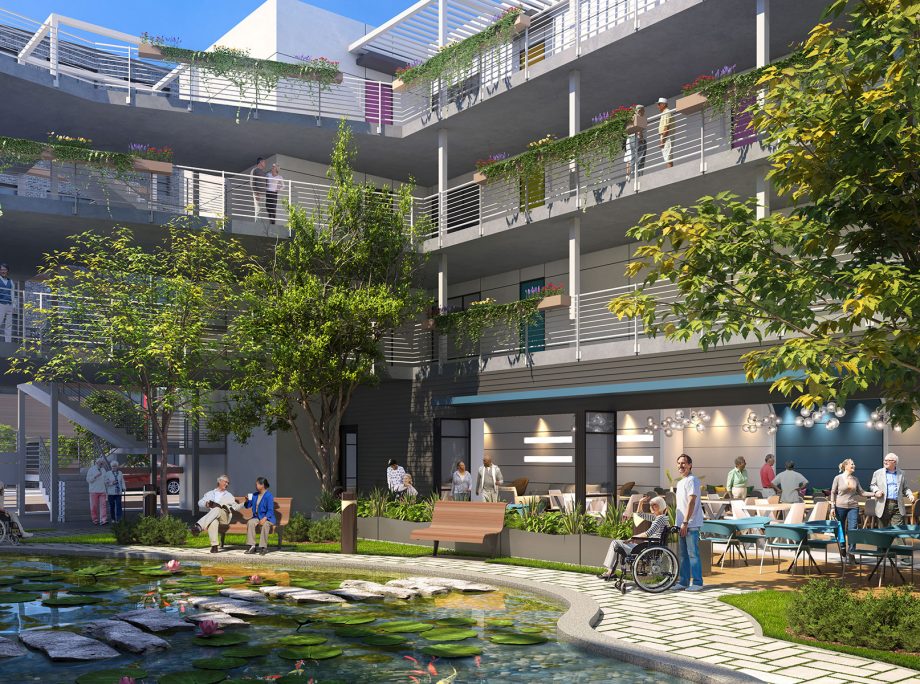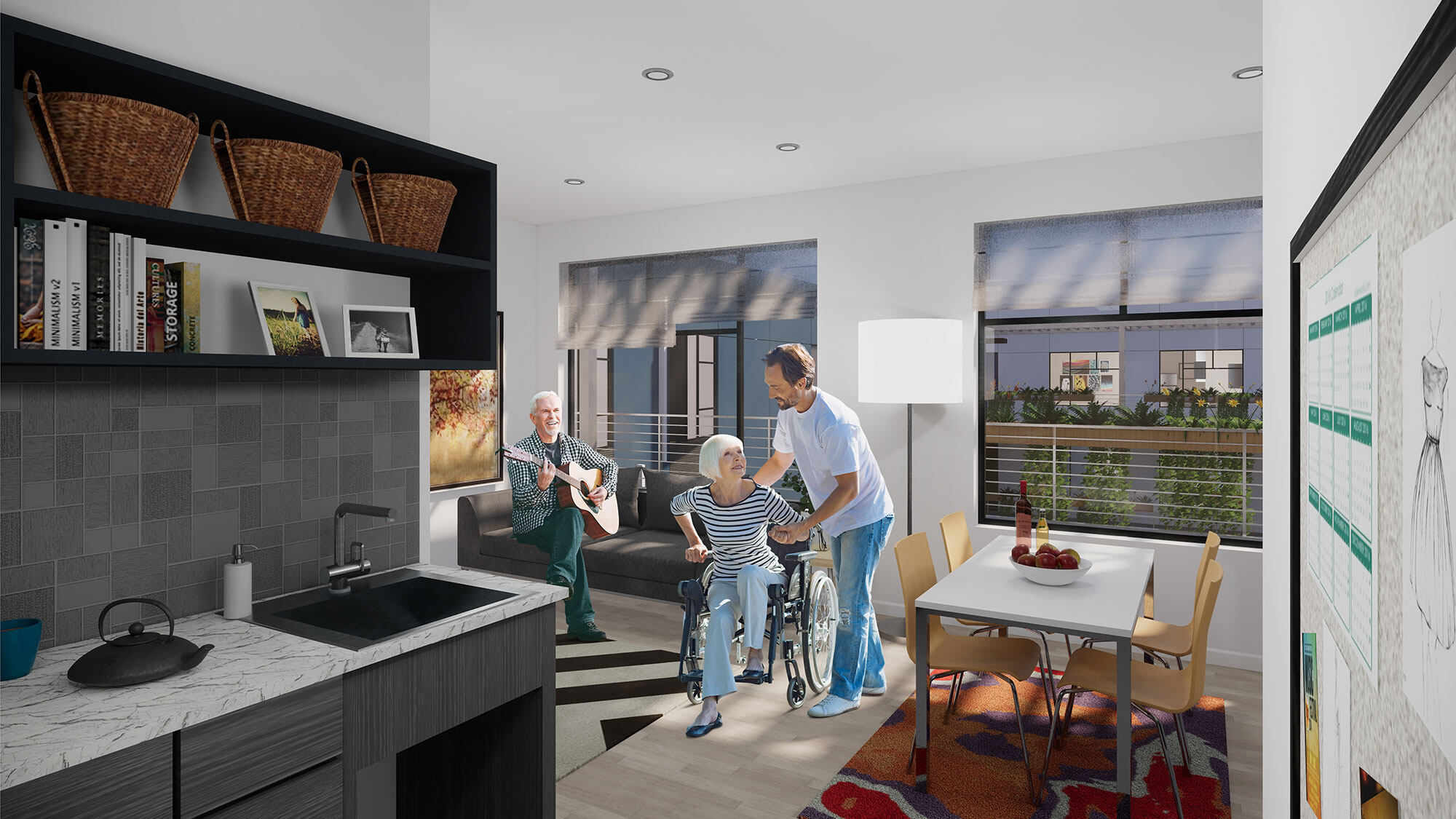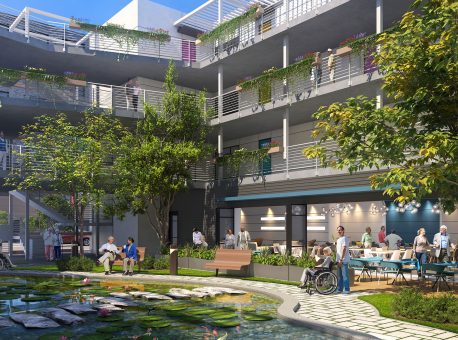New ‘Co-Care’ Concept Offers Design for Middle-Market Senior Living
Senior Housing News
October 28, 2019
A new design concept for assisted living communities could help lower rates for future middle-income residents, and spur new ideas for reaching the middle market in the process.
The concept, dubbed “Co-Care,” was created by California-based KTGY Architecture + Planning’s R+D Studio, and first announced this week. It aims to lower costs for residents by housing them in shared units in communities with leaner, more communal amenity spaces. Specifically, the concept is aimed at aiding the millions of older adults who, a decade from now, won’t qualify for public assistance but also may not be able to afford private-pay senior housing as it exists today.
KTGY began thinking of ways to address the middle market about six months ago, according to Ben Seager, director of design for KTGY.
“This has been an issue facing the industry for as long as I can remember,” Seager told Senior Housing News. “The Co-Care concept looks to address the growing issue of the affordability of assisted living for seniors in a community-driven, mutually beneficial design.”
Under the concept, residents would live with three other older adults in a four-bedroom, two-bathroom unit. Each unit would have a small kitchen and space for laundry, living and dining, totaling about 320 square feet per resident.
As imagined in a hypothetical design from KTGY, the community would have a ground-floor courtyard, a koi pond and walking paths for residents. Connected to the courtyard through moveable glass walls would be a communal dining area, commercial kitchen, and cafe lounge area. Additionally, the concept includes flexible activity spaces, a fitness and physical therapy room, service and administrative spaces on the ground-level, with subterranean parking underneath.
KTGY isn’t the only company that believes shared units help meet the senior living middle market. Atlanta-based Affinity Living Group currently offers “companion rooms” at its communities which range in rates from $2,300 to $2,800 per bed.
While design is one piece of the affordability puzzle, care costs also greatly factor into it. And although the Co-Care concept can only do so much to reduce those costs, it can help in other ways, such as reducing the need for so many staffers on hand.
“If someone needs help with simple activities such as making their morning coffee or getting the lid off a jar of peanut butter, most likely someone living in that residence will be able to help rather than calling a nurse or staff person for help,” Seager said. “Also, by providing multi-use amenity spaces there is no need to staff multiple spaces, some of which are lightly used.”
While the concept is designed for assisted living, it could also be applied to other care settings, including independent living and memory care, Seager added. In the end, the concept is meant to serve as a launchpad for new ideas.
“It may not get built in its current form, but it will serve to help spur conversation and innovation in the industry,” he said. “We are constantly putting new ideas, including this one, in front of our clients.”
This is part of a broader effort throughout the industry to “throw spaghetti against the wall” to solve the middle-market puzzle. Coming up with a scalable, profitable middle-market model not only will require new approaches to design and operations, but may require new types of investors in the space.





